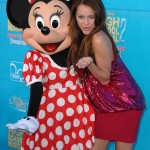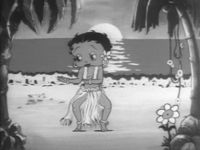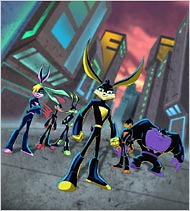 Last week’s New York Times article on 21st century ‘facelifts’ for kiddie characters gave me the willies on a variety of fronts, despite the fact that I’ve personally ‘freshened’ many a brand in my time.
Last week’s New York Times article on 21st century ‘facelifts’ for kiddie characters gave me the willies on a variety of fronts, despite the fact that I’ve personally ‘freshened’ many a brand in my time.
From Peanuts to Barbie, I ‘get’ that mega-brands need to stay au courant…
I’ve admittedly had a hard time tapping into specific analysis of what’s irking me most about these media makeovers beyond the obvious body image, sexualization, and gender role portrayal. (which frankly, has been in a pretty toxic state in kiddie cartoons for eons)
Face it, once I got past the initial eye roll of Angelina Ballerina being given a tummy tuck (yah, every mouse needs one, eh?) the Care Bears and My Little Pony being slimmed down and morphed into eyelash batting beasties, and Strawberry Shortcake’s sliced poundage from chubby cherub to svelte silken-haired hottie…it dawned on me that it’s a new archetype on the “demographic damage meter” of directing messages to teeny tiny itty bitty kids that’s really bugging me the most.
It’s the normalization of body ideals at an ever-younger age and sexualization of everything from pink basketballs with eyelashes to buffed boy He-Man hunka burnin’ steroid stud.
I keep groping for historic precedent in my media analysis, harkening back to Betty Boop and her famous firsts as the animated “hoochie-mama 30s-era sexpot, ” thinking “Surely, Miz Betty is MUCH more provocative than the pornified Bratz dolls, right?”
But here’s the thing…Betty Boop (left) and even Jessica Rabbit (right) were always ambient, wink and nod-adult-fodder, NOT strutting their vampy stuff to lil’ Suzy Q in the ‘pink’ toy aisle in aspirational merchandising/role modeling mode.
Similarly, rebranding these nostalgic icons are akin to Disney morphing Minnie Mouse into Jessica Rabbit in “Who Framed Roger Rabbit” .
Or ditching Minnie’s trademark polka-dot dress-n-bow for breasts and stilettos and Miley sexy-sultry vision, ya know?
 In fairness, maybe it’s landing on me this way because I have a comparative benchmark, a ‘mental relay’ if you will, whereas kids may see the ‘rebranded’ icon at first sight, taking it purely at face value rather than a critical eye toward the ‘new and improved’ sexualized variation.
In fairness, maybe it’s landing on me this way because I have a comparative benchmark, a ‘mental relay’ if you will, whereas kids may see the ‘rebranded’ icon at first sight, taking it purely at face value rather than a critical eye toward the ‘new and improved’ sexualized variation.
But if we stay with the “normative” concept for a sec, you’ll see that’s where the lines of differentiation cut like a scalpel.
To me, it seems we’re establishing new toxic cues at ever younger ages, in an aspirational form of emulation that is contrived at best.
C’mon, do we really need a Goth Tweety Bird?An edgy ‘Loonatics’ version of Bugs Bunny’s Looney Tunes now with menacing eyes and a ‘tude to match?
What the heck will they do with Elmer Fudd?
This all seems like a stretch to me…I say these characters should go to the branding graveyard of nostalgia for cobwebbed preservation of days gone by.
Do we really need to shift from the ragdoll, bonnet wearing Holly Hobbie to a hipster tween? Let ‘em be.
It’s not like some of these pop culture icons are mega-brands like Peanuts or Pooh Bear or Barbie for that matter. These are one-off little American Greetings style creations.
Which begs the question…
Are we so mindlessly lacking in creativity that we need to ‘resurrect’ old toys, silly sitcoms and branded nostalgia under new 21st century rules of hipdom?
I’d say it’s become…well…normative.
Not trying to get into over-analysis of cartoons, but hey, it ‘is what it is’…(fun site btw, at cartoon overanalyzations, where they ask,
“Are there existential dilemmas in Foster’s Home for Imaginary Friends? Does Brad Bird’s oeuvre contain creepy Objectivist subtext? Is there a Lorenzo Music/Bill Murray Ghostbusters-Garfield conspiracy? Were Paw Paw Bears simply evolved Snorks with a totemic religion? Or maybe Scooby and Shaggy, like, totally smoked weed, man. These and other questions require more than careful analysis. They demand over-analyzation.”
Wicked smart fun, check out their site. 😉
Anyway, I digress; look at the movie remakes floating around this season…
Get Smart (I loved agent 99, and Maxwell was such a lovable doof, let him BE in my Don Adams silly memory bank!) Speed Racer (always appealed to my Japanese anime background) the blockbuster predictables (The Incredible Hulk and the Batman franchise, both darker, bulkier, and edgier) and even a retro nod to the ‘90s with heart-throb David Duchovny and Gillian Anderson returning in The X-Files coming out next month…
See what I mean? C’mon people, this begs the marketing question…
Can’t we come up with something other than remakes of prior ideas in the name of nostalgia? (yes, I ‘get’ that it’s a precision-driven market, first-strike attempt on the appeal of yesteryear to ‘yuppies now parents’, but as the magazine “Bitch” says, in forthright candor on this issue:
“Strawberry Shortcake is one thing, but bears and mice aren’t supposed to mimic mainstream beauty standards. Or, at least, up until now they weren’t!”
“Interestingly, the NYT piece explains these revamps, in part, with the statement, “For parents, nostalgia is considered a bigger sales hook than ever because of the increasingly violent and hyper-sexualized media landscape.” But if that’s the case, wouldn’t it make more sense to, I don’t know, preserve a corner of the toy realm – especially toys marketed chiefly to girls – that doesn’t reflect, however tangentially, that very landscape?”
Couldn’t agree more.
Part Two tomorrow, as we visit Shaping Youth Correspondent and body image expert Dr. Robyn’s views on same and my own take on the ’twas ever thus’ syndrome…
Stay tuned…
6-18 Update! Check out this new post on Sara Grimes’ Gamine Expedition blog about the marketing backstory of the Strawberry Shortcake resurrection.
Next thing ya know, someone could rename free cardboard boxes as ‘nostalgic/retro’ “stackers” or something, slap a set of markers on the marketing label, and voila, it’ll turn into a packaged DIY ‘fort finder’ or something… 😉
As I posted in her comments, it looks like our freckle faced friend has been blended into so ‘berry’ many makeovers that she could’ve been a smoothie by now!
Also, be sure to check out Sara’s post on the top tier licensed characters for toys and goods…yet another solid “Case for Make Believe.”
Other Aligned Content:
Gender & Sexuality in Japanese Anime (theory.org.uk, David Gauntlett)
Shaping Youth Features All Girls Week, A Gender Discussion
Toys Receiving Makeovers: New, Improved, Sexy? (Feministe Fatale)
More Sexy Toy Makeovers: Lisa Frank, Trolls & Cabbage Patch Kids (Sociological Images)
Science Direct: Body Image Journal/Gender/Impact Links List
Toymakers Leave My Childhood Alone! (The-F-word.org blog)
KidTV: A Guide for the Perplexed (Steve Sailer, National Post)
Cut from the Oscars: Cartoon Characters Sins (NYTimes)
More here in the handouts:
Stereotypes/Female Action Heroes Lesson Plan for Middle Schoolers (Media Awareness)
From Sailor Moon to Powerpuff Girls: Female Action Heroes (Media Awareness Student Handout)
Visual Credits: NYTimes article, Strawberry Shortcake/TCFC; Warner Bros. via Businesswire, Jessica via TV.yahoo.com, Betty via Wikipedia











Great article Amy! I have been noticing this as well and haven’t found out why it bugs me so much. It might be that I have 3 and 4 year old daughters. One thing is sure though, kids of this generation are under a lot of pressure to look, act and be a certain way. It might not be more than any other time, but it is very present. Thanks for posting.
Thanks for taking the time to comment, Paul…yes, the statistics are showing that these appearance-based cues are landing on kids at ever-younger ages and it’s warping their worldview in terms of ‘how they look’ vs. ‘who they are’…You can see more about this in our body image category, where we’ve linked to the APA study on early sexualization and the detrimental impact from a psychological standpoint on kids’ self-worth being tied to their looks. Bleh.
i have a hard time with all of this. the new looks bother me — and my daughters — because of their lack of originality and individuality, something that was already in short supply. thankfully, for now, kids can still recognize bland when they see it. yet i know the constant sending of messages via cartoons now, video games after, and magazines after that hit their target sooner or later.
It could be worse. It could be the American McGee version of Strawberry Shortcake.